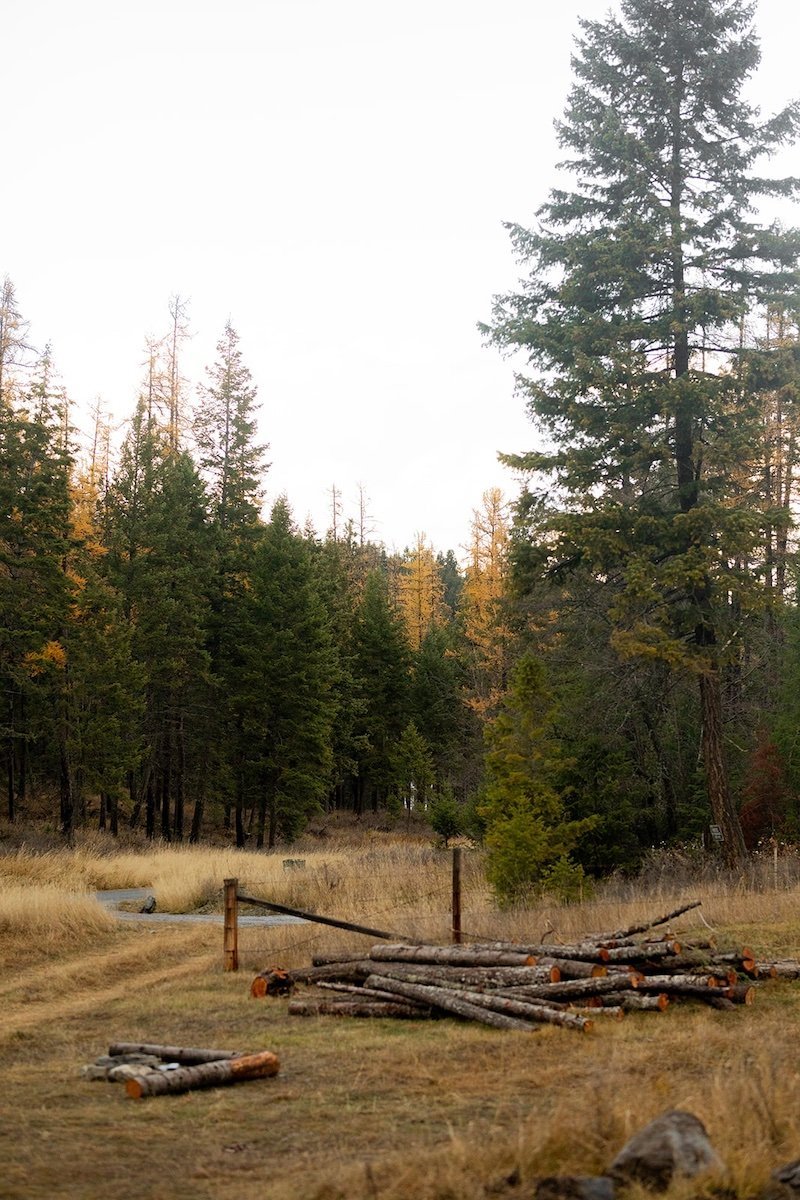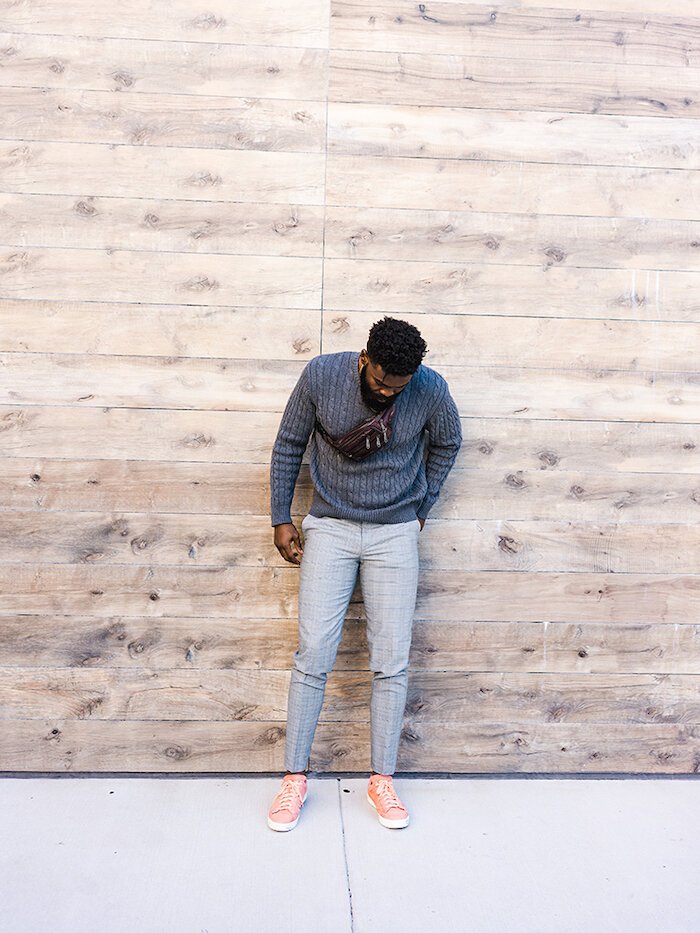
How To Support Your Unhoused Neighbors
“I’m homeless in California because the rent is ridiculous.”
La Donna, a 36-year-old unhoused resident of Van Nuys in Los Angeles, California, tells me over the phone. “Where is the person working at, like, a McDonalds living at? I don’t know how they do it.” She’s right—in renter-majority cities (like LA), housing costs have risen exponentially faster than, say, minimum wage, which largely contributes to an increase in homelessness.
There’s a common misconception that something separates housed residents from their unhoused neighbors. Though, statistically speaking, 59 percent of Americans are one to two paychecks away from being unhoused themselves—and that was pre-pandemic! There’s no doubt that COVID has exacerbated that reality, especially for those experiencing racism, gender bias, lack of access to education, and an increasingly difficult job market.
With no one definition of what it means to be unhoused, it’s near impossible to collect accurate data for worldwide statistics, though it’s estimated that there are currently about 580,000 unhoused individuals in the US, with California holding the title for the largest unhoused population in the nation, and Los Angeles County seeing a 13 percent increase in homelessness the last year.
“After all, what does community mean if it systemically excludes and overlooks large demographics?”
And because there is no singular cause of homelessness, there is no one way to “fix” it, either.
Like most big-picture problems (hello I’d like to introduce you to the climate crisis?), the onus is not on the individual, though we do—or should, anyway—have a moral responsibility to support our community.
There are small(er) scale ways to assist our most vulnerable community members, while also putting pressure on city officials to use their power for long-lasting systemic change. After all, what does community mean if it systemically excludes and overlooks large demographics? We must take a closer look at the community itself and dissolve the us vs. them binary. And, we can start by regarding everyone who resides near us as our neighbors, regardless of their housing situation. Here’s what to do next.
Communicate With Your Unhoused Neighbors
“Introducing yourself is a good place to start,” says Kira Morrison, an LA-based mutual aid organizer. Strike up a conversation with your unhoused neighbors, and communicate regularly to establish a friendly relationship. Morrison notes, “it’s important that they know they can trust you and that you’re not involved with the government, law enforcement, city, sanitation, etc, or other entities that are serious threats to the safety of unhoused communities.”
When I asked La Donna for her tips on how to connect with unhoused people in your neighborhood, she said that slowly approaching, saying hello, and explaining yourself will usually get people to come out and talk, but added that it’s important to remember that we’re encroaching on their space when we do this.
“Across unhoused residents and community outreach organizers alike, the common thread is to let your neighbor guide you.”
Across unhoused residents and community outreach organizers alike, the common thread is to let your neighbor guide you. Morrison notes that “if they want to talk to you or want your services, they will say so. If not, they will let you know—and do not force anything on them.”
Remember, this is about building community! Mutual aid is not about being a savior or pushing our ideas onto another person; instead, we should assist others because we’re all better off when we choose empathy.
Let Unhoused Individuals Lead
Community outreach members all stress the importance of trying to provide specific supplies if requested, preferably in a way that’s sustainable for you while being able to be completed weekly. Once you’ve connected with an individual, ask what is most helpful to them, and then try your best to provide it.
When I asked La Donna what she felt was most helpful, she noted that “sometimes it’s hard for us to feed ourselves, so the groups that bring food and provide meals help to stop the neighborhood from stealing. [When] we’re being fed, we don’t need to take from a market.” She also listed bigger-ticket items like tarps, tents, and canopies; in her opinion, “canopies [like EZ UPs] are better than tents because they are more spacious, but some people like tents as their shelters.”
Is there anything that’s not helpful? She laughs, saying “I’ve never gotten anything that isn’t helpful besides, like, vegetarian food.” I laugh with her, noting internally how my 12 years of vegetarianism is often a privilege, while also making a note to ask for food preferences before delivering meals.
“ Once you’ve connected with an individual, ask what is most helpful to them, and then try your best to provide it.”
Our unhoused residents know best, but you can also reach out to a local shelter or homeless services center for more information on necessities and supplies. Current homelessness responses typically aren’t gender-sensitive, and with 38 percent of those currently experiencing homelessness being women, menstrual products are key.
Smaller, more accessible items include cleaning supplies, baby wipes, water, bags or backpacks, and simple care items. Since the start of the pandemic, PPE has also been a necessity to keep the unhoused community protected.
Similar to efforts in reaching out, providing supplies is no different. Justin Kornmann, an activist who distributes meals to vulnerable communities in Los Angeles, says it can be as simple as making sandwiches with supplies purchased in bulk at a store like Costco. If you’re not sure what to provide, consider a few things: What are things you’d want? What items help you meet your own basic needs—clean socks, underwear, water? What’s the weather like—will you need to provide warmth in winter or ways to cool down in hotter months?
Offer Resources Beyond Goods
Donations of supplies are helpful, but money and intangible resources go a long way, too!
If you’re thinking, “But what if they spend it on illegal substances or alcohol?” I’m going to politely ask you to destroy the cop in your head. Specific data regarding alcoholism and substance abuse in the unhoused community is difficult to acquire, but we need to remind ourselves that alcoholism is an illness, and that “substance abuse is both a cause and a result of homelessness.” Truly supporting our community means we must shed the idea that we are somehow better than our unhoused neighbors, and certainly must stop policing their actions.
Educating while advocating is also crucial to supporting the unhoused community. La Donna says the most important thing we can do for our neighbors is to spread knowledge; another thing we have access to that unhoused community may not. She notes that organizations like Street Watch LA host meetings where unhoused neighbors can learn about their rights on the streets and what they can and can’t do. “Give us the CliffNotes!” she explains.
“Truly supporting our community means we must shed the idea that we are somehow better than our unhoused neighbors, and certainly must stop policing their actions.”
Morrison says she recommends looking into local ordinances that criminalize unhoused folks. “Organizations such as LACAN and Street Watch have great resources and information on Know Your Rights for unhoused folks,” she says, adding that “having this knowledge is critical when faced with confrontation from law enforcement.” This handout by COHSF is San Francisco-focused, but a great jumping-off point to understand the kind of information we can be supplying our unhoused neighbors with.
If you’re not in Los Angeles, you can research community-led mutual aid organizations local to your area and inquire about getting involved. Start by googling: “mutual aid [your city]” and vetting the results. Most large cities have a Coalition for the Homeless or similar organization, though we encourage involvement in grassroots organizing, like Vocal-NY in New York City or Grassroots Collaborative in Chicago. For those looking to help across the pond, Crisis UK is an excellent resource. If you are LA-local, you can use this tool from Everyone In (a branch of United Way Los Angeles) to get involved whether you have 15 seconds or 60+ minutes, though many of the tool’s suggestions can be applied outside of Los Angeles with a little research.
Advocate For Systemic Change
Do your elected officials support everyone in the community, housed or unhoused? Learn about your local officials (like the mayor, city council, and neighborhood council members) and read up on their policies and how they’ve allocated their funds. So often, as Kornmann puts it, “our public officials seem to just be alleviating the symptoms rather than getting to the root causes of this crisis.”
“The most pressing issue for the unhoused community is the way they’re treated by the city, government, and police.”
For instance, how much money is going towards something like law enforcement versus community-supported efforts? La Donna expressed to me how much organizations like Street Watch has helped her understand how city budgets work, like how in Los Angeles, the police department receives $3.14 billion in funding, while homeless and housing services receive less than that combined. In New York City, a whopping $10.9 billion goes to police, compared to the $3.2 billion allocated for unhoused services. While that’s an astronomical number compared to most cities, NYC’s efforts have proven that proper investment can actually lead to a plateau in the growth of the unhoused population.
“The model they’ve been doing doesn’t work and it doesn’t appeal to us,” says La Donna, who explained that the most pressing issue for the unhoused community is the way they’re treated by the city, government, and police. “They want us off the streets and we want to get off the streets, but we don’t want to go into a system that assumes that we must be drug abusers, sex traffickers, etc. There are so many assumptions that are made that aren’t true […] I feel like they start at the bottom and attack us, instead of going to those areas and dealing with the real issues.”
She explained candidly that community-led efforts felt more sympathetic than any city-run program she’s participated in, adding that she thinks LAHSA workers need to be formerly unhoused people, as a way to get them on their feet again and for more understanding and awareness around their situation.
Morrison adds to this, saying that the “homeless services” efforts are in desperate need of improvement. “The city only currently offers temporary solutions for housing rather than providing permanent housing,” she says, “[and] shelters are often very unsafe […] not only for COVID concerns, but also due to potential for violence from other folks [… or] from law enforcement.”
“We need systems in place for permanent housing, not displacement, sweeps, or temporary shelters.”
Homelessness isn’t an inevitable issue that should be accepted as status quo—that’s been proven in other cities. We need systems in place for permanent housing, not displacement, sweeps, or temporary shelters. None of those allow people time and access to resources for getting back on their feet and ending the cycle of chronic homelessness, they simply shuffle them around and largely ignore the problem.
As individuals, we can listen, support, and advocate for the rights of unhoused people—because empathy is essential. You’ll never know how much direct eye contact, a smile, or a homemade meal could mean for someone, especially someone who feels widely ignored. Find out by starting a conversation and going from there.
If we view our unhoused neighbors as our equals, instead of “an area of the city we need to work on cleaning up,” as Kornmann says, “we can do a lot of good.”
“As individuals, we can listen, support, and advocate for the rights of unhoused people—because empathy is essential.”
Alyssa Julian is the Social Media + Community Lead at The Good Trade. She enjoys a weekly flower arrangement, film photography, ditching the city for the weekend, and a good cappuccino. Say hi on Instagram!



